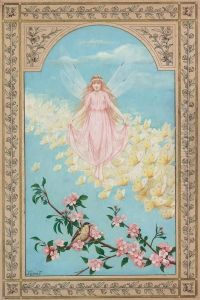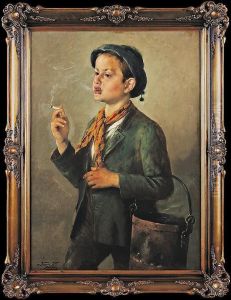Ferenc Kozics Paintings
Ferenc Kozics was a notable Hungarian sculptor and medalist born in 1821 in Szeged, Hungary, and died in 1907. His life and career spanned the 19th century, a period rich in the evolution of European art, during which he contributed significantly to the fields of sculpture and medal-making. Kozics was known for his adept skills in capturing the human form, as well as for his contributions to public monuments and his exquisite craftsmanship in medals, which were highly valued for their artistic and commemorative qualities.
Kozics received his early education in the arts in Hungary but, like many artists of his time, sought further training abroad to refine his techniques and broaden his artistic perspective. He spent a significant part of his career in Vienna, Austria, which was a vibrant center for the arts in the 19th century. This exposure to the broader European art scene greatly influenced his work, blending traditional Hungarian themes with the broader European artistic movements of the time.
Throughout his career, Kozics was involved in several important projects, including public monuments and memorials that celebrated Hungarian history and culture. His sculptures often depicted figures from Hungarian history and mythology, imbuing them with a sense of national pride and identity. In addition to his larger works, Kozics was highly regarded for his smaller sculptures and medals, which were praised for their intricate details and the skillful way in which he captured the nuances of human expressions and emotions.
Kozics's contributions to Hungarian art were recognized during his lifetime, and he received numerous commissions from both public and private patrons. His works remain an important part of Hungary's cultural heritage, reflecting the artistic achievements of the country during the 19th century. Despite the passage of time, Kozics's sculptures and medals continue to be admired for their beauty, craftsmanship, and historical significance. His legacy lives on not only in his surviving works but also in his influence on subsequent generations of Hungarian artists.

